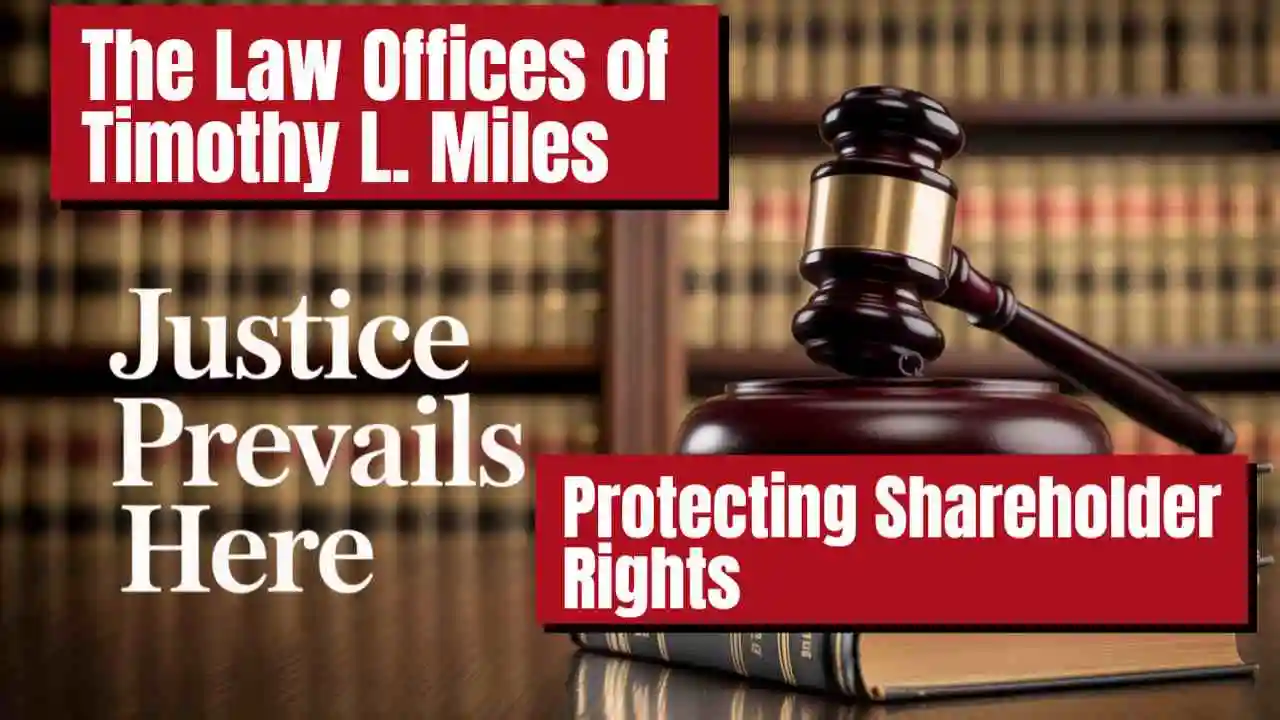
1. What Is the Class Period in a Securities Fraud Class Action Lawsuit?
In Securities Class Action Litigation, the class period is a crucial concept that defines the timeframe during which the alleged securities fraud took place. This period begins on the date when the misrepresentations or omissions that are the basis for the lawsuit first occurred and ends when the truth about the company’s financial status or operations is publicly disclosed, causing a corrective reaction in the securities’ market price.
The class period is significant because it determines who can be included as members of the class – typically, investors who purchased or otherwise acquired the security in question during this time frame and suffered losses as a result of the alleged fraud.
Determining the appropriate class period in Securities Class Action Litigation often involves detailed analysis and can be a contentious issue. Plaintiffs aim to establish a class period that effectively captures all instances of misleading information and subsequent investor transactions, maximizing potential recoveries.
On the other hand, defendants may argue for a narrower class period to limit their liability exposure. Courts ultimately decide the class period based on evidence presented, including disclosures, financial reports, market reactions, and expert testimony.
The establishment of a class period is not merely a procedural matter; it has significant legal and financial implications. For plaintiffs, an accurately defined class period can strengthen their case by demonstrating a clear link between the defendants’ actions and investor losses. For defendants, challenging the proposed class period can be a strategic move to mitigate potential damages.
Additionally, once the court certifies the class period, it sets the stage for subsequent legal processes such as discovery, settlement negotiations, or trial.
In conclusion, understanding and defining the class period in Securities Class Action Litigation is fundamental to both plaintiffs and defendants. It shapes the scope of litigation, identifies eligible class members, and influences potential recovery amounts. Legal professionals involved in these cases must meticulously analyze all relevant facts and evidence to advocate effectively for their clients regarding this critical aspect of securities fraud lawsuits.
2. What Is a Corrective Disclosure in a Securities Class Action?
A corrective disclosure in a securities class action is a pivotal event that can significantly impact the trajectory of a Securities Fraud Class Action Lawsuit. This disclosure refers to the public dissemination of information that corrects previous misstatements or omissions made by a company regarding its financial health, operations, or other material aspects impacting its stock price.
Typically, a corrective disclosure occurs through press releases, regulatory filings, or public announcements that reveal the truth about prior misrepresentations or fraudulent activities. This revelation often leads to a sudden and substantial decline in the company’s stock price, causing harm to investors who relied on the initial, misleading information when making their investment decisions.
In the context of a Securities Fraud Class Action Lawsuit, the corrective disclosure serves a critical function by establishing the factual basis for claims of fraud. It allows plaintiffs to demonstrate that the company’s previous statements were false or misleading and that these inaccuracies had a direct impact on their financial losses. The timing and content of the corrective disclosure are scrutinized closely, as they must clearly link the decline in stock value to the newly revealed information. This linkage is essential for proving both causation and damages in court.
Moreover, a well-documented corrective disclosure can bolster the plaintiffs’ case by providing concrete evidence of the defendants’ knowledge or recklessness regarding the misleading information. It underscores the notion that the company was aware of, or should have been aware of, the inaccuracies it propagated, thus solidifying allegations of intent or gross negligence. This aspect is crucial for satisfying legal standards such as scienter, which refers to a wrongful state of mind or intent to deceive.
Corrective disclosures also play a vital role in settlements and resolutions of Securities Fraud Class Action Lawsuits. They often prompt regulatory investigations and enforcement actions by bodies such as the Securities and Exchange Commission (SEC), further validating plaintiffs’ claims and potentially leading to favorable outcomes. Additionally, these disclosures can incentivize companies to settle disputes out of court to avoid protracted litigation and further reputational damage.
In summary, in a Securities Fraud Class Action Lawsuit, a corrective disclosure is an indispensable element that not only substantiates claims of fraud but also enhances plaintiffs’ ability to achieve successful litigation outcomes. By revealing previously concealed truths, it provides a foundation for demonstrating causation, damages, and intent, thereby facilitating justice for defrauded investors.

3. What Are Governance Reforms in a Securities Class Action Lawsuit?
Governance reforms in a securities fraud class action lawsuit refer to changes and improvements made to the governance structures, policies, and practices of a company as a result of a legal settlement or court ruling.
These reforms are typically implemented to enhance transparency, accountability, and shareholder rights, ultimately aiming to prevent future misconduct and improve corporate governance.
For instance, governance reforms may include measures such as strengthening the board of directors’ oversight responsibilities, enhancing disclosure practices, and improving internal controls and compliance programs.
These reforms could involve adopting new policies for executive compensation, establishing more rigorous financial reporting procedures, and ensuring greater independence and effectiveness of the audit committee. By instituting these changes, investors aims to restore investor confidence and promote long-term value creation for its shareholders.
Effective governance reforms in a securities fraud class action lawsuit are essential for rebuilding trust between a company and its investors. They help mitigate the risk of future legal challenges and contribute to a more robust and transparent corporate environment. For companies, embracing these reforms can lead to improved operational practices, better risk management, and enhanced overall corporate performance.
In summary, governance reforms in a securities fraud class action lawsuit play a crucial role in rectifying past wrongdoings, fostering a culture of accountability, and safeguarding the interests of shareholders.

4. What Are Misleading Statements Under the Securities Laws?
Misleading statements in securities fraud litigation refesr to false or deceptive information provided by companies regarding their financial health, operations, or future prospects. Such statements can significantly impact investors’ decisions, leading to financial losses and market instability and the filing of a securities class action lawsuit.
When companies or their executives disseminate inaccurate information, either intentionally or through negligence, they can be held accountable under securities laws and become subject to securities fraud litigation.
This often results in securities fraud class action lawsuits, where affected investors collectively seek redress. The goal of these securities class action lawsuits is to ensure transparency and integrity in the financial markets, holding those who engage in misleading practices responsible and compensating those harmed by their actions.
The stringent regulations and potential legal repercussions serve as a deterrent against the dissemination of false or misleading information in the securities market.
5. What Is the Deadline to File an Appeal in a Civil Case?
The deadline to file an appeal in a civil case is a critical aspect of the litigation process that must be adhered to meticulously to ensure that the right to appeal is preserved. Typically, the timeframe for filing an appeal can vary depending on the jurisdiction and nature of the case. In most federal civil cases, the notice of appeal must be filed within 30 days after the entry of the judgment or order being appealed.
However, some specific types of cases, such as securities class action lawsuits, might have different deadlines or additional procedural requirements. It is paramount for parties involved in securities litigation to be acutely aware of these deadlines to protect their rights and interests effectively.
The importance of meeting the appeal deadline cannot be overstated. Missing this critical deadline can result in the loss of the right to appeal, effectively barring any further review of the case by a higher court. This is particularly significant in securities class action cases where substantial financial stakes and complex legal issues are involved.
Parties engaged in securities litigation should work closely with their legal counsel to ensure that all procedural requirements, including filing deadlines, are met promptly and accurately.
In conclusion, understanding and adhering to the deadline to file an appeal in a civil case is essential for any litigant. Whether dealing with general civil litigation or more specialized areas such as securities class action lawsuits, timely action is crucial for safeguarding legal rights and ensuring that a higher court can review and possibly overturn a lower court’s decision.
Legal professionals must diligently monitor these deadlines and provide timely guidance to their clients to navigate the complexities of securities litigation successfully.

6. What Is There the Dodd-Frank Wall Street Reform and Consumer Protection Act Of 2010?
The Dodd-Frank Wall Street Reform and Consumer Protection Act of 2010 is a comprehensive piece of financial reform legislation passed in response to the financial crisis of 2007-2008.
Its primary aim is to increase transparency and accountability in the financial system, reduce risks, and protect consumers from abusive financial services practices. This Act brought significant changes to the regulatory environment by creating new regulatory bodies, such as the Financial Stability Oversight Council (FSOC) and the Consumer Financial Protection Bureau (CFPB).
These organizations are tasked with monitoring systemic risk and ensuring that consumers are treated fairly by financial institutions and can the information they obtain can lead to securities fraud class action lawsuits.
One of the key components of the Dodd-Frank Act is its focus on preventing another financial collapse similar to that experienced in 2008. It imposes stricter capital requirements on banks, mandates more rigorous stress testing, and enhances oversight of hedge funds and derivatives markets. Additionally, the Volcker Rule, a part of the Dodd-Frank Act, restricts banks from engaging in proprietary trading and limits their ownership interests in hedge funds and private equity.
While the Dodd-Frank Act has been praised for its role in stabilizing the financial system and protecting consumers, it has also faced criticism. Some argue that it places too much burden on smaller financial institutions, potentially stifling economic growth. Conversely, supporters believe that these regulations are necessary to prevent reckless behavior that could lead to another financial crisis and more Enron-type securities fraud litigation.
In relation to contemporary legal matters, the Dodd-Frank Act’s provisions can play a crucial role. The Act’s emphasis on transparency and accountability ensures that companies are held responsible for any misleading or fraudulent activities affecting investors and can lead to more credibility in securities class action litigation.
This regulatory framework helps protect investors’ interests and maintains confidence in the financial markets. Overall, the Dodd-Frank Wall Street Reform and Consumer Protection Act of 2010 represents a significant step toward a more stable and fair financial system and hopefully for investors the need for less securities class action litigation.
Contact Timothy L. Miles Today About Securities Class Action Litigation
If you suffered substantial losses and wish to serve as lead plaintiff in a securities fraud litigation, or have general questions about securities class action litigation, or your rights as a shareholder, please contact attorney Timothy L. Miles of the Law Offices of Timothy L. Miles, at no cost, by calling 855/846-6529 or via e-mail at [email protected]. (24/7/365).
Timothy L. Miles, Esq.
Law Offices of Timothy L. Miles
Tapestry at Brentwood Town Center
300 Centerview Dr. #247
Mailbox #1091
Brentwood,TN 37027
Phone: (855) Tim-MLaw (855-846-6529)
Email: [email protected]
Website: www.classactionlawyertn.com
Facebook Linkedin Pinterest youtube



